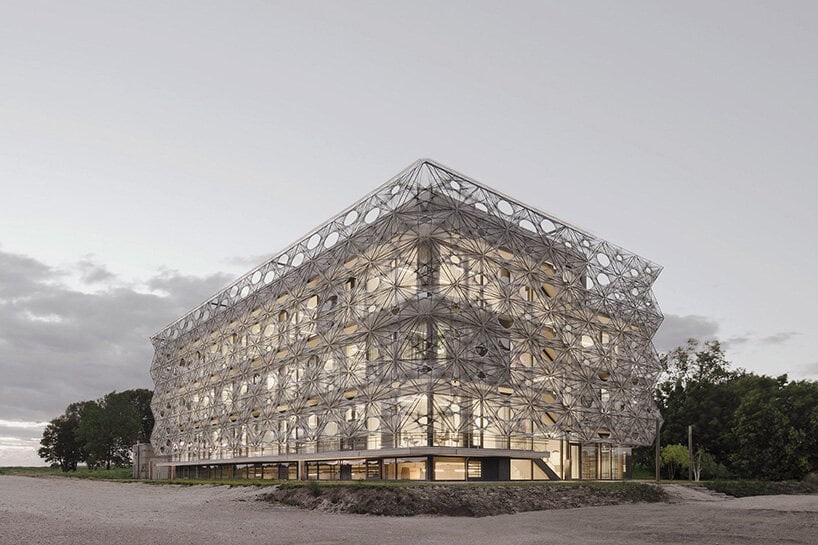Texoversum: A Marvel of Robotic Innovation in Germany’s Educational Landscape

In the heart of Reutlingen, Germany, Texoversum stands tall, a testament to architectural innovation and sustainability. Created collaboratively by Allmannwappner and Menges Scheffler Architekten, this university building for textiles has garnered attention for its groundbreaking facade. Robotically woven fibers, a product of the ICD / ITKE research teams at the University of Stuttgart, envelope Texoversum, pushing the boundaries of architectural possibilities and symbolizing the future potential of fiber-based materials and robotic techniques.

A Textile Revolution
Texoversum's facade, informed by textile construction, represents a radical departure from conventional architectural norms. Developed using a robotic winding process at the University of Stuttgart, the facade is composed of triangular panels made from a combination of white glass fibers and black carbon fibers. These panels, measuring approximately four meters in width and 1.5 meters in height, are a result of bespoke production, eliminating any waste or material off-cuts.
Achim Menges, a partner at Menges Scheffler Architekten, explains the process: "Fibrous filaments are freely placed between two rotating winding scaffolds by a robot. During manufacturing, a lattice of white glass fibers is generated, onto which the black carbon fibers are placed where they are structurally needed." This intricate process results in a unique architectural appearance for each component, eliminating the need for molds or cores.
Texoversum's facade is not merely decorative; it plays a vital role in the building's environmental strategy. Comprising five types of panels, the facade features a staggered arrangement of self-supporting tiles. This design creates a captivating multi-layered effect, shading internal spaces while providing strategic openings for views outside the building. The facade acts as external sun protection, meeting stringent shading requirements in compliance with German building codes.

Innovative Structural Design
The fusion of white glass fibers and black carbon fibers serves a dual purpose. While the white glass fibers act as a formwork, the black carbon fibers provide necessary structural capacity. This pure fiber structure spans from floor to floor, allowing cantilevers of around four meters at the upper edge without the need for a steel frame. Structural engineer Jan Kippers notes that Texoversum's facade is a testament to innovative engineering, meeting the full requirements of German building authorities.
Internally, Texoversum embraces a split-level design with a central atrium, separating the building into two halves. An industrial aesthetic with exposed concrete structures, ceiling ductwork, and an open-plan layout encourages collaborative working. This design reflects the intersection of various disciplines and activities within the building, making it a true hub for teaching, research, and innovation in cross-cutting textile technologies.
Texoversum's facade is not just a singular achievement but part of a collaborative effort between Allmannwappner, Menges Scheffler Architekten, and the ICD / ITKE research teams at the University of Stuttgart. The innovative weaving technique employed for the facade has previously been utilized in temporary structures, such as the Elytra Filament Pavilion at London's V&A museum and the BUGA Wood Pavilion at the Bundesgartenschau horticultural show in Germany.

Future Prospects and Pioneering Design
Texoversum has set a new precedent in architectural innovation, symbolizing the future potential of fiber-based materials and robotic techniques. Architect Achim Menges envisions broader applications for this technology, stating that Texoversum is the first permanent building to use this design and manufacturing approach. As a beacon of sustainability, innovation, and collaboration, Texoversum is shaping the future of educational architecture and paving the way for a new era of environmentally conscious, technologically advanced building practices.













